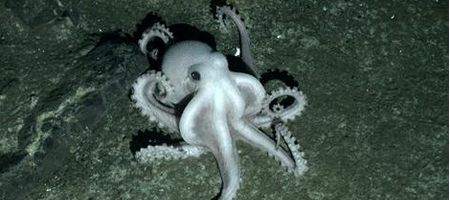Several previously-unknown species have been discovered on the seafloor near Antarctica, clustered around hydrothermal vents.

They include new species of yeti crab, starfish, barnacles and sea anemones, as well as an octopus that’s ‘probably’ new to science, says the British team.
Using a Remotely Operated Vehicle (ROV), the researchers were for the first time ever able to explore the East Scotia Ridge deep beneath the Southern Ocean. Here, hydrothermal vents cate a unique env ironment, with some areas reaching temperatures of over 800 degrees Farenheit.
“Hydrothermal vents are home to animals found nowhere else on the planet that get their energy not from the sun but from breaking down chemicals, such as hydrogen sulphide,” says Professor Alex Rogers of Oxford University.
“The first survey of these particular vents, in the Southern Ocean near Antarctica, has revealed a hot, dark, ‘lost world’ in which whole communities of previously unknown marine organisms thrive.”
The dives revealed huge colonies of the new species of yeti crab, clustered around vent chimneys. Also spotted were a new predatory seastar with seven arms, seen crawling across fields of stalked barnacles, and an unidentified pale octopus nearly 2,400 metres down on the seafloor.
“What we didn’t find is almost as surprising as what we did,” says Rogers. “Many animals such as tubeworms, vent mussels, vent crabs, and vent shrimps, found in hydrothermal vents in the Pacific, Atlantic, and Indian Oceans, simply weren’t there.”
One possible reason for this, says the team, is that the Southern Ocean may act as a barrier to some vent animals. Another may simply be that, globally, vent ecosystems are more diverse than previously thought.
“These findings are yet more evidence of the precious diversity to be found throughout the world’s oceans,” says Rogers.
“Everywhere we look, whether it is in the sunlit coral reefs of tropical waters or these Antarctic vents shrouded in eternal darkness, we find unique ecosystems that we need to understand and protect.”






